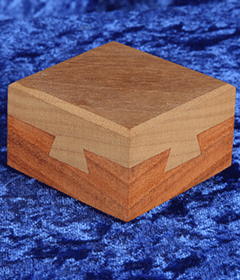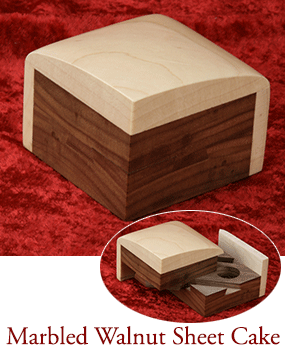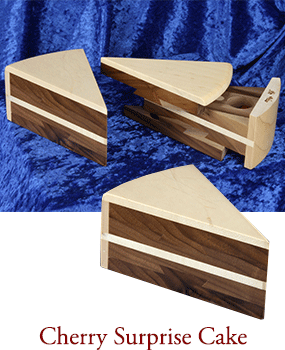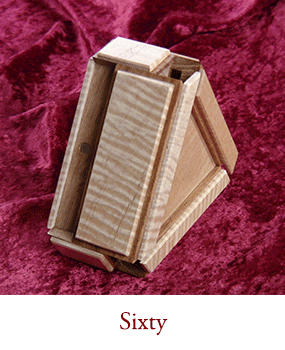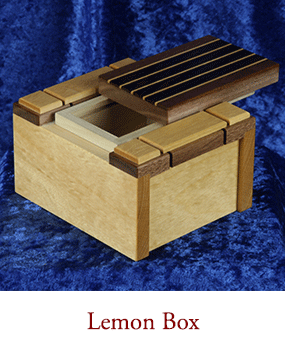Perry's tool zone
Perry McDaniel
The puzzled guy - by perry McDaniel
If you haven't seen the March 2008 issue of WOOD Magazine, take a look at page 32. INCRA's own Puzzled Guy, Perry McDaniel is featured in a 6 page article that highlights his interest in puzzle box making. The article includes plenty of information on making two of Perry's sliding dovetail puzzle boxes using the INCRA Fence System. Here's what Perry has to say about his favorite box project.
The “Sandfield Joint Puzzle” as shown in the WOOD Magazine article, set the hook for what has become a feverish fascination for producing ever more complex and devious boxes. While most of the 4500 + boxes Perry has made over the last 13 years represent about 20 Sandfield/McDaniel collaborative designs executed in 200 piece limited edition production runs, Perry has designed another 19 unique boxes produced in smaller quantities.
“I enjoy the challenge of producing machine shop tolerances in small box making. Mechanics in wood can be a very satisfying endeavor. You just need a relatively stable wood, a good design, a little technique and some quality tools. The writer for WOOD Magazine asked me if I could make one of my boxes without an INCRA Fence System and I responded that while anything is possible with the right collection of jigs and fixtures, the INCRA System is really the only practical way to make piston-fit sliding dovetails without any special fixtures.”
True to form, many of the puzzles Perry has made over the years use a sliding dovetail to hold the main components together. A simple lock mechanism inside the box keeps the parts from sliding. Well, sometimes the locks are simple. The “Marbled Walnut Sheet Cake” has a 7 step opening sequence to finally get to the marble that is hidden inside. His “Cherry Surprise Cake” uses a centrifugal force mechanism. See photos below:
If you are already making puzzles for fun, or have a unique puzzle box idea you can't wait to try out, you might want to take a look at the First Annual Stewart Coffin Puzzle Craft Contest sponsored by INCRA and CubicDissection.com. Cash prizes and some nifty Incra tools are offered for the winners. You can learn more about the contest rules at http://www.cubicdissection.com/contest/contest.html.

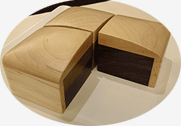
The “Marbled Walnut Sheet Cake” has a 7 step opening sequence to finally get to the marble that is hidden inside.

Keep us posted on your unique shop layout or any special project you may be working on by dropping me an email: perry@incra.com
If you are not able to view the book or you do not have Adobe Acrobat installed, you may download it here. Simply follow the instructions provided by Adobe.
